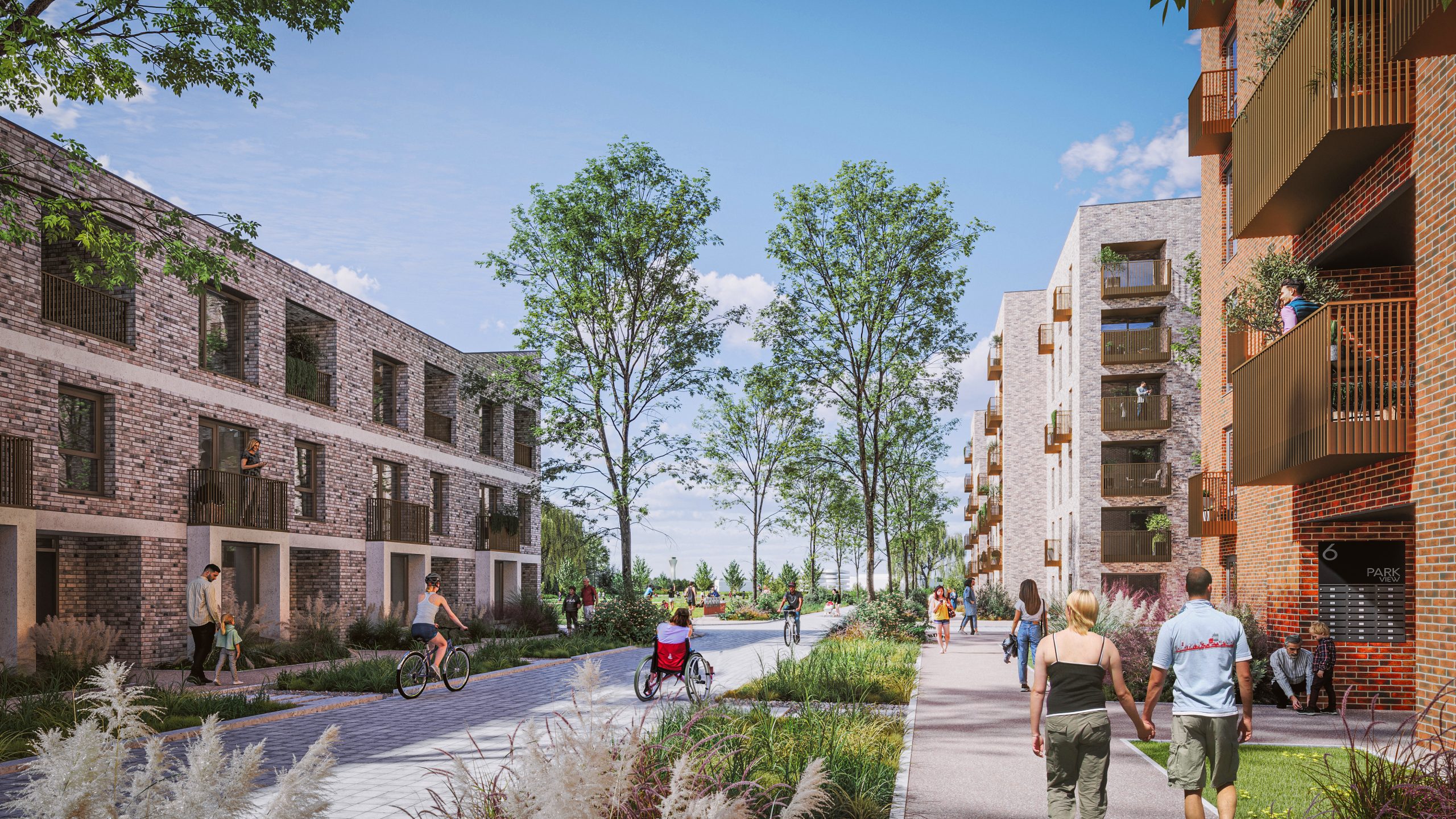By the end of 2023, we will be creeping up to the halfway point of a decade in which Scotland has set ambitious targets to be met by its end. These targets span a variety of portfolio areas, including our economy, environment, transport sector and overall health and wellbeing.
The Fourth National Planning Framework (NPF4), which is due to be debated in the Scottish Parliament tomorrow (11 January) takes a slightly longer-term view, in that it envisages the type of Scotland we will live in by 2045. That said, there are key targets set out in NPF4 which need to be hit in just seven years’ time. These include a substantial reduction in emissions from homes, falling by 68 per cent from 2020 levels, and a commitment to halting biodiversity loss by 2030 as well.
My hunch is that NPF4 won’t yet be met with much general recognition or comprehension, which is understandable given where public focus has been over the past few years. Perhaps it never will because, as a concept, it is not the catchiest. But its development has already spanned a lengthy period of time, going back to pre-Covid days, and incorporating a manner of consultations, research and draft measures.
And what we have before us now, to be discussed in the Holyrood chamber this week is, to my mind, a critical step forward in how we can plan and develop large scale projects that are befitting Scotland as we move towards the mid-21st Century.
In terms of how we live, work and play, NPF4 is hugely significant. It seeks to address how Scotland’s distinctive natural environment can be protected and enhanced, whilst positively impacting housing delivery, in terms of availability, affordability and energy efficiency. It could, if implemented properly, achieve all of this whilst also creating jobs and enhancing economic growth. It will also be important that agendas for planning deliberations and decisions reprioritise NPF4 key areas to ensure they rank ahead of traditional matters like roads and transport, which have typically driven planning decision making.
One of my key interests, as Chief Executive of Crosswind Developments, is NPF4’s stated intent to maximise brownfield development and promote a “brownfield-first approach” in this regard. This means that Scotland would prioritise the regeneration of previously developed land not currently in use and seek to repurpose it for new projects.
I am sure we can all think of examples near where we live of disused land crying out to be developed. In our case, the Elements Edinburgh site on the city’s western periphery is completely aligned with the core strategic aims of NPF4’s National Spatial Strategy. It will provide net zero energy solutions including extended heat networks, pioneer low carbon, resilient 20-minute neighbourhoods, five hectares of open green space, whilst targeting economic investment and building community wealth.
All of this will support one million square feet of space dedicated to business, and an inter-generational residential area including a minimum of 625 affordable housing units, thereby creating exactly the kind of sustainable, productive places Scotland needs. And because there is no link to or overlap with issues at any other sites, work could begin immediately and advance at speed.
NPF4 shows that Scotland has the right plans, heading in the right direction, with the right desired outcomes. What we need this year is tangible, demonstrable progress that ensures these aspirations become reality. I believe that involves turbo-charging existing plans for innovative new developments and furthering Scotland’s position as one of the best places in the world to live.
John Watson is chief executive of Crosswind Developments
This article first appeared in The Scotsman 10th January 2023
• New commercial and residential development using innovative green tech on 30ha brownfield site
• 2,500 homes, 6,600 jobs & more than 1m sq. ft of commercial space
• Net zero carbon development • A Digital Quarter to support start-ups, growing & global tech firms
• New public park, ‘Raingarden corridor’ & dedicated cycleways part of sustainability commitment
• £460m annual benefit to Scottish economy
A proposal for a major new housing and commercial development in Edinburgh, which would regenerate a disused site and generate thousands of jobs, has been submitted to City of Edinburgh Council.
Elements Edinburgh will be a sustainable, inclusive, net zero carbon development using the latest in green technology to build 2500 homes and 1,020,000 sq. ft of commercial space including a dedicated Digital Quarter, hotels and retail units.
More than 40% of the 30.4 hectare site will be dedicated green and public space with an informal park opening up access to the Gogar Burn. Active travel including dedicated cycleways and pathways will take priority, housing will be built to exacting new green standards and there will be a commitment to use innovative ways of generating energy and reducing waste.
Crosswind Developments, the company behind the development, say the commitment to proceed with the investment is a huge vote of confidence in Edinburgh’s future as the city looks to rebuild its economy following the impact of the coronavirus pandemic. The plan for a “Live-Work”
environment at Elements Edinburgh focussing on inclusive sectors such as the digital economy, emerging technologies, and skills development as well as creating new green space, emerged following extensive consultation with local communities.
Crosswind was set up to breathe new life into a disused, brownfield site around a decommissioned runway at Edinburgh Airport taking on board the City of Edinburgh & Scottish Government’s ambitions for a greener, more balanced Scottish economy.
A report by BiGGAR Economics predicts the development could boost Scotland’s GVA (Gross Value Added) by £460m per year and support 6600 jobs.
“The impact of coronavirus has been severe both in terms of public health and economic damage however we remain confident in the long term economic future of both Edinburgh & Scotland which is why we are pressing ahead with this important development,” said Crosswind chief executive John Watson.
“We have adapted our original plans, which already included many aspects of sustainability and inclusion, to ensure that Elements Edinburgh will be an exemplar for similar developments as we move to new ways of living and working.
”This is a significant commitment to invest in the Scottish economy at a crucial time ”
Architects Corstorphine + Wright say the principle behind the plans for Elements Edinburgh is to build a “sense of place” with blended living and working areas and significant open space. At its heart will be a Digital Quarter, home to tech start-ups and growing digital companies. The site is one of the best connected in Scotland with first class rail, road and air connections making it an attractive Scottish base for international firms.
The overall design concept is centred on the Elements Hub including a vehicle-free public piazza at its heart which provides a high-quality public realm creating a civic centre and gathering place.
Active travel will be prioritised over private car use through an extensive network of paths and cycleways linking all parts of the site and beyond its boundaries. The development will support an inter-generational community with both living and working spaces fully adaptable and open spaces designed to be accessible by all
Charles Bell, of Corstorphine + Wright, said the vision for Elements Edinburgh took into consideration the need to adapt to the impact of coronavirus on society which will require
residents, businesses and employees to do things differently.
“Elements Edinburgh will be designed to give employees and businesses a working and living environment that is flexible, responsive and reduces commute or travel to work times. The introduction of local amenities allows people to remain within the local community but still retain connectivity to existing active travel networks.
“The hub and spoke design of Elements Edinburgh allows inclusive access, enabling greater mobility and accessibility for a wide range of people of all ages including those with specialist needs and access requirements.”
The Digital Quarter, which aims to bring together academia, start-ups and growing tech companies, would be a natural extension of Edinburgh’s “innovation corridor’.
The technology sector is forecast to be one of Scotland’s fastest growing and Edinburgh is already home to almost a quarter of Scotland’s technology firms.
Office spaces will be adaptable: flexible enough to enable upscaling as companies grow, inter-connected to foster collaboration and networking.
An application for planning permission in principle (PPiP) has been submitted to City of Edinburgh Council and is awaiting validation.

Why Scotland needs to plan for the long term – John Watson
10th January 2023
By the end of 2023, we will be creeping up to the halfway point of a decade in which Scotland has set ambitious targets to be met by its end….

Major boost for Edinburgh as developer commits to invest in new Digital Quarter
18th August 2020
• New commercial and residential development using innovative green tech on 30ha brownfield site • 2,500 homes, 6,600 jobs & more than 1m sq. ft of commercial space • Net…


